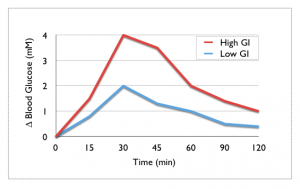FATTY ACIDS

Fatty acids are aliphatic monocarboxylic acids with mostly unbranched carbon chain.
The term "fatty acids" is based on the knowledge that natural fats and oils consist of esters of long-chain carboxylic acids with glycerol.
From this point of view, fatty acids are also counted as lipids.
Later, all other alkylcarboxylic acids and their unsaturated representatives were also classified as fatty acids.
GLYCAEMIC LOAD

Taking into account the amount of carbohydrate, the glycemic index results in the so-called glycemic load.
It also takes into account the carbohydrate density of the individual foods in addition to the respective GI value.